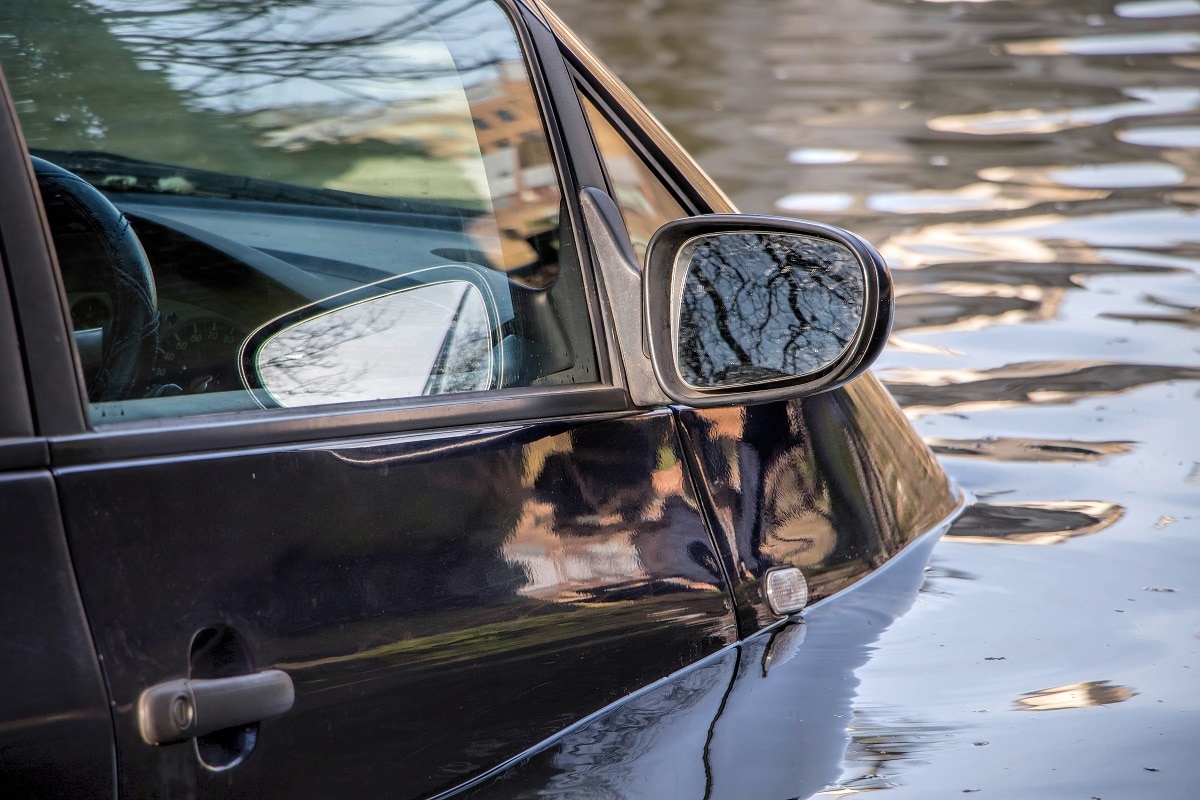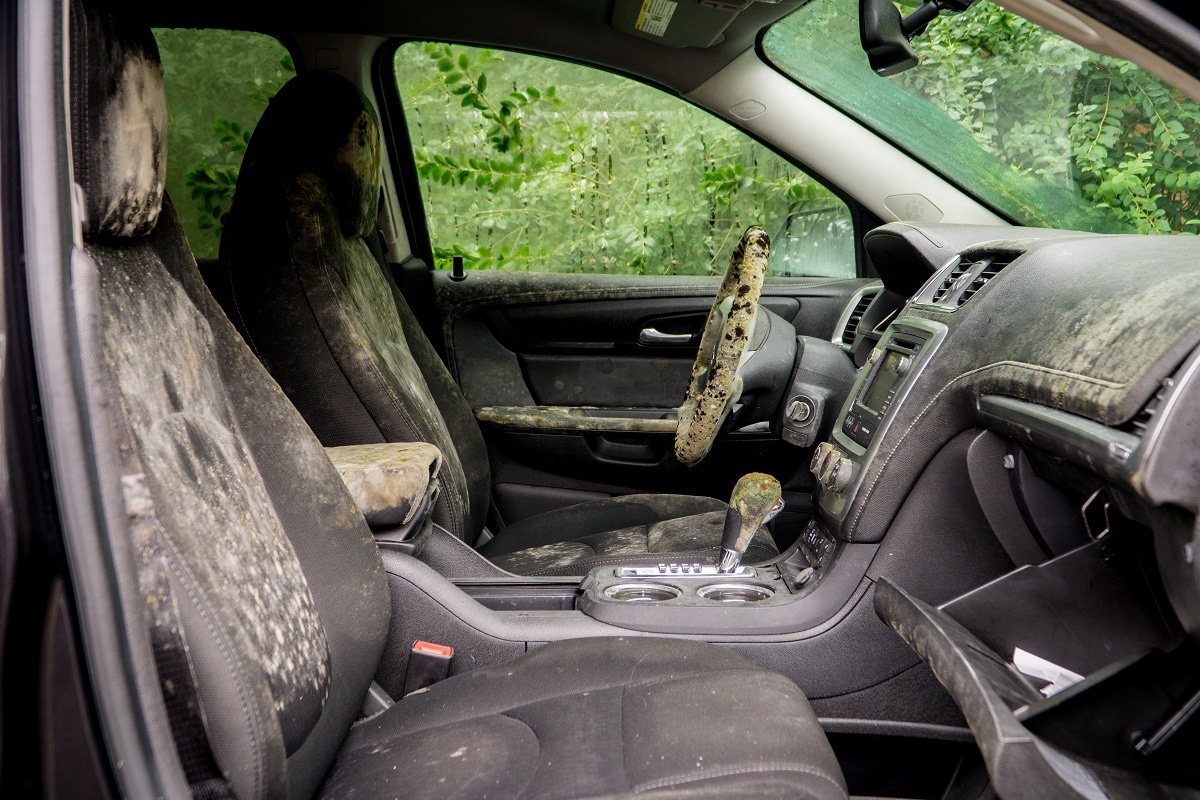
If you're thinking about purchasing a car with water damage or one that's been in a flood, we have one suggestion for you: Unless you can do all the reconditioning and repair work yourself, you probably shouldn't.
According to a 2017 report by CARFAX, the national used-car market was inundated with nearly a half-million flood-damaged vehicles after several hurricanes pummeled America a few years ago. This shocking exposé ranked the southeastern states—namely Georgia, Alabama and our home state of Florida—as one of the regions with the most flood-damaged pre-owned vehicles on the market.
These flooded cars pose all sorts of risks, including shorted-out electrical systems, engine and transmission failure, damage to exhaust, brake/ABS systems, and dangerous mold. You may also get bilked into paying thousands of dollars more than the waterlogged car is actually worth.
Of course, when you buy from a reputable used car dealership near you, you don't have to worry much about purchasing a flood vehicle; auto dealers are required to identify any problems with the vehicles they sell, including if they've been marked as totaled, salvaged or damaged by water.
Well, what about when you're dealing with a private seller? They're not always known to be honest, to say the least, so you've got to consider if the risk (buying a flooded used car that should be salvaged) is worth the reward (saving a few thousand bucks). Here are some tips to help you spot potential auto fraud in the form of a flooded vehicle.
Is it a Flooded Car? 8 Red Flags to Watch for
Experts from Consumer Reports and The Weather Channel say that you can protect yourself from unwittingly buying a flood-damaged used car, as long as you know what to look for. If you notice any of these issues when checking out a pre-owned vehicle, proceed with the utmost caution.
1. Musty smell
- Close the doors and windows for a few minutes, then get in the car and give the interior the “sniff test.”
- Does the car smell musty or damp?
- Does it seem like there’s too much air freshener being used?
2. Damp carpets
- Is the carpeting loose or damp?
- Does it appear like it’s been recently replaced?
- Check the carpeting in the trunk for similar signs.
- If you can, lift up the carpets and floormats to expose the padding underneath, which can stay damp for months after water damage.
3. Stained or mismatched upholstery
- Are there any stains on the upholstery?
- Lift up on the upholstery fabric. Is it loose?
- Does the upholstery color match the rest of the interior?
- Do the seats look as if they’ve been replaced?
- Is there any fading visible on seats, door panels or any other surfaces?
4. Rust
- Thoroughly examine the vehicle’s interior and exterior for signs of rust; places to look include around the doors, underneath the dash and on or underneath the pedals.
- Check the inside of the hood, the trunk, and wheel wells.
- Pay special attention to the springs that hold up the trunk and hood.
- Look for rust on screws in the console or any area where water would not typically reach.
- Any green discoloration on copper may be a sign of oxidation.
- White powder and pitting on aluminum and other alloys may be a sign of oxidation.
5. Mud
- Look underneath the seats and inside the glove compartment for any dried mud or silt that an unscrupulous seller may have missed while “reconditioning” the vehicle.
- Do the same in the spare tire compartment, around the alternator, and behind any wiring harnesses.
- If you pull the seatbelts out, are there any mildew stains or grime that would indicate water was absorbed?
6. Electrical
- Flood damage will make wiring brittle. Check underneath the dash to see if the wiring is flexible or stiff.
- Are there any electrical problems, like audio cutting in/out, surges of power, dim lighting, or anything related to the dashboard display?
- Door speakers aren't working properly.
7. Headlights & Taillights
- Examine the headlights and taillights for signs of fogging or moisture beads.
- You may even find tiny holes drilled into the plastic lenses to drain water.
- This same moisture problem may be visible in the instrument panel.
8. Oil & Air Filter
- Water and oil don’t mix. Check the engine oil to see if it looks murky or cloudy.
- Examine the paper air filter looking for water stains.
Extra Steps to Protect Yourself from Buying a Car with Water Damage

Check the used car’s VIN.
- Several organizations, including CARFAX, Experian, and the National Insurance Crime Bureau, will let you check the used car’s Vehicle Identification Number (VIN) for any issues.
- Steer clear of salvage/flood titles or cars coming from recently flooded parts of the country.
Buy from a reputable used car dealer near you.
- While car dealers are required by law to disclose water damage, there are some dishonest used car lots out there who skirt the law by claiming they were not aware of any damage.
- When looking for good used cars for sale near you, be wary of cars that are sold “as is.”
Get a Pre-Purchase Inspection (PPI)
- Never buy a used vehicle from a private party without first getting it inspected by a certified mechanic you trust.
Consider a Certified Pre-Owned Vehicle
- The best way to avoid purchasing a flood-damaged used car is to buy a certified pre-owned vehicle from a dealership. You'll be guaranteeing yourself additional peace of mind thanks to a CPO car's extended warranty.
- Read more about why a certified pre-owned Hyundai is one of the smartest purchases you can make.
Visit Braman Hyundai in Miami to shop our selection of used SUVs, cars, trucks and vans for sale. We have excellent used car specials available, and all of our pre-owned vehicles have been thoroughly inspected to ensure they're of the highest quality.

